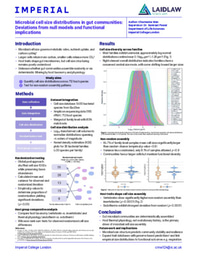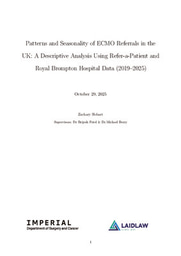Evaluating the impact of fenced nest sites on Little Tern reproductive success by analysing nesting frequencies and fledgeling flight frequency.

Supervised by Prof. Rebecca Senior, Department of Biological Sciences, Durham University
Background and Rationale
Between 1985 and 2000, the number of Little Tern breeding pairs in the United Kingdom (UK) have declined by 24% (Cabot and Nisbet, 2013). They are one of the UK’s rarest seabirds, with less than 2,000 breeding pairs (Pickerell, 2004). Declining populations are attributed to predation, climate change and human disturbance (Medeiros et al., 2007) as the sandy beaches Little Terns breed on are heavily used by humans recreationally (Medeiros et al., 2012). Little Terns are known to select nesting sites with sparse vegetation (Lopes, Ramos and Paiva, 2015), leaving them exposed to predators including foxes and dogs, which for some colonies are the main reason for lack of hatching success (Holloway, 1993). Therefore, to prevent further population decline conservation management strategies have been employed at 29 breeding sites across England and Wales (Wilson et al., 2020).
Despite conservation efforts and monitoring of Little Terns, their populations are still in decline (Wilson et al., 2020), however fencing nesting sites and utilising wardens does result in a positive impact on the survival rates of adult Little Terns (Medeiros et al., 2007). Seaton Carew in County Durham utilises fences and wardens to protect nesting sites following their relocation from Crimdon Dene, a site 7 miles north (Seascapes, 2025). There is limited published data on the Seaton Carew breeding colony since it was established in 2020 (Seascapes, 2025) so publishing my results will increase awareness of the Little Tern colony at Seaton Carew. Crimdon Dene is an ideal control for comparing the effects of predator exclosure fencing on Little Terns because of its proximity, presence of a warden and lack of fences (Wilson et al., 2020).
Research Questions/aims
The main questions I will centre my research around are: ‘Do fenced nesting sites alter Little Tern fledgeling behaviour?’ and “Is there a significant difference in Little Tern nesting rates between fenced and unfenced nest sites?”.
By the end of my project, I aim to have statistically analysed whether fenced sites have higher densities of Little Tern nests than unfenced sites. I also will analyse if specific behaviours have a significantly different frequency of occurrence between the two sites.
I will use my results to consider if the conservation techniques employed are beneficial to Little Terns’ reproductive success.
Research Methodology
My project will collect data on Little Tern populations at Seaton Carew and Crimdon Dene. Point count surveys will be used to count nest density (Ragheb, Miller and Leone, 2019) while scan and all-occurrence samplingwill be used to record fledgeling behaviour (Powell and Baskir, 2021). By conducting my field research between July 7th and July 27th, I will be able to observe development from chick to fledgeling, based on timings given by Spurn Bird Observatory (2023). Additionally, some nests should still be present at this time of the year (Cabot and Nisbet, 2013).
I will collaborate with Durham Wildlife Trust who helps manage the site to ensure my results are accurate.
I will statistically analyse my results for density of nests at both sites using R. Scan sampling will be used to count the number of individuals exhibiting certain behaviours at hourly intervals, whilst all-occurrence sampling will be used to count number of fledgeling flights to sea. R will be used to statistically analyse if the ratios of flights to nest density is significantly different between populations.
My research would require ethical approval from the Animal Welfare Review Board at Durham University as it is an observational study involving live animals (Durham University, 2024; Roberts, 2024). I will also need to apply for fieldwork approval before March 31st.
Plan of work & time schedule
Week 1-2 (June 30th to July 6th): Preliminary research using existing literature on Little Tern conservation techniques, behavioural patterns and nesting habits.
Week 2-5 (July 7th to July 27th): Observational research (see Methodology) spread over two locations: Crimdon Dene and Seaton Carew (10 days at each location).
Week 5-6 (July 28th to August 10th): Statistical analysis of data collected (see methodology); analysis of photographs and footage; paper write-up and poster creation.
Outcomes
The expected outcome would be a conservation evidence article which I will submit for publication in the Ecological Solutions and Evidence journal. Additionally, I will create a poster board for the Seaton Carew site explaining the work done to protect Little Terns and its impact on them.
Leadership in Action plans
I plan to travel to Europe to conduct further observational research on Little Terns and work with local governments in employing conservation methods such as wardens and temporary fencing to protect seabirds.
Bibliography
Cabot, D. and Nisbet, I. (2013) Terns. Edited by Corbet S.A., West R., Streeter D., Flegg J., Silvertown J. London: Collins. pp. 136-139
Durham University (2024) Ethics in Research and Scholarship. Available at: https://www.durham.ac.uk/research/ethics--governance/ethics-in-reseach-and-scholarship/ (Accessed 3 February 2025)
Hewett Ragheb, E.L., Miller, K.E. and Hoerl Leone, E. (2019) “Exclosure fences around nests of imperiled Florida Grasshopper Sparrows reduce rates of predation by mammals”, Journal of Field Ornithology, 90(4). Available at: https://doi.org/10.1111/jofo.12310.
Holloway, M. (1993) “The variable breeding success of the little tern Sterna albifrons in South-East India and protective measures needed for its conservation”, Biological Conservation, 65(1). pp. 1-8. Available at: https://doi.org/10.1016/0006-3207(93)90189-8
Lopes, C.S., Ramos, J.R., Paiva, V.H. (2015) “Changes in Vegetation Cover Explain Shifts of Colony Sites by Little Terns (Sternula albifrons) in Coastal Portugal”, Waterbirds: the International Journal of Waterbird Biology,38(3). pp. 260-268. Available at: https://www.jstor.org/stable/24641085
Medeiros, R., Ramos, J.R., Paiva, V.H., Almeida, A., Pedro, P., Antunes, S. (2007) “Signage reduces the impact of human disturbance on little tern nesting success in Portugal”, Biological Conservation, 135(1). pp.99-106. Available at: https://doi.org/10.1016/j.biocon.2006.10.001.
Medeiros, R., Ramos, J.R., Pedro, P., Thomas, R.J. (2012) “Reproductive Consequences of Nest Site Selection by Little Terns Breeding on Sandy Beaches”, Waterbirds: the International Journal of Waterbird Biology, 35(4). pp.512-524. Available at: https://www.jstor.org/stable/23326553
Pickerell, G. (2004) in Mitchell P.I, Newton S., Ratcliffe N. and Dunn T.E. (eds.) Seabird populations of Britain and Ireland. London: Bloomsbury Publishing, pp. 339-349
Powell, D.M. and Baskir, E.A. (2021) in Zimbler-DeLorenzo, H. and Margulis, S.W. (eds.) Exploring Animal Behaviour in Laboratory and Field. Cambridge: Academic Press, pp. 49-61
Roberts, C. (2024) Animal Research. Available at: https://www.durham.ac.uk/research/ethics--governance/animal-research/ (Accessed 3 February 2025)
Seascapes (2025) Wildlife. Available at: https://exploreseascapes.co.uk/wildlife/ (Accessed 2 February 2025)
Spurn Bird Observatory (2023) Record-breaking Little Tern season against all odds. Available at: https://spurnbirdobservatory.co.uk/news/record-breaking-little-tern-season-against-all-odds-12-10-2023(Accessed 3 February 2025)
Wilson, L.J., Rendell-Read, S., Lock, L., Drewitt, A.L., Bolton, M. (2020) “Effectiveness of a five-year project of intensive, regional-scale, coordinated management for little terns Sternula albifrons across the major UK colonies”, Journal for Nature Conservation, 53(1)





Please sign in
If you are a registered user on Laidlaw Scholars Network, please sign in